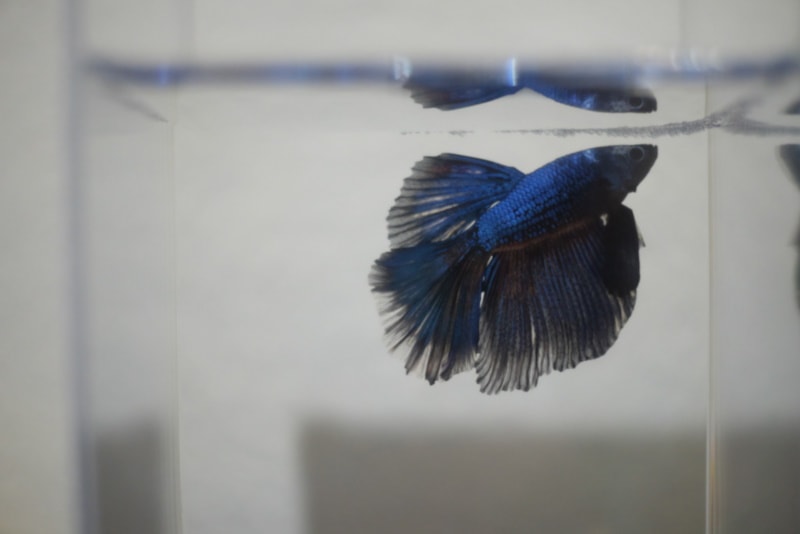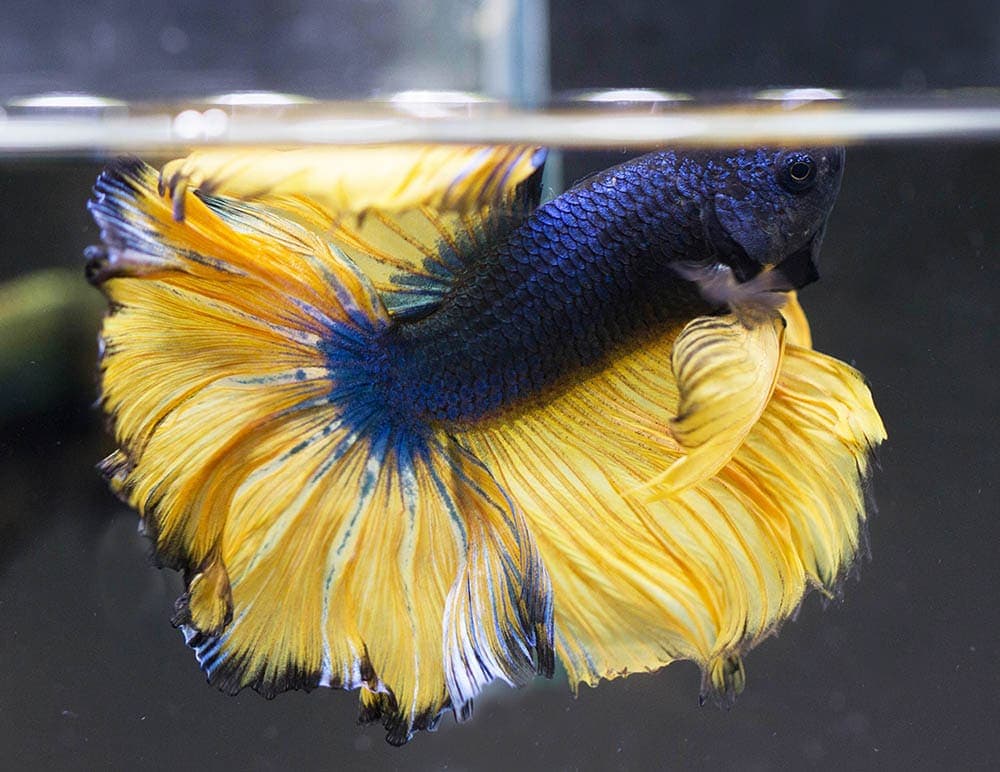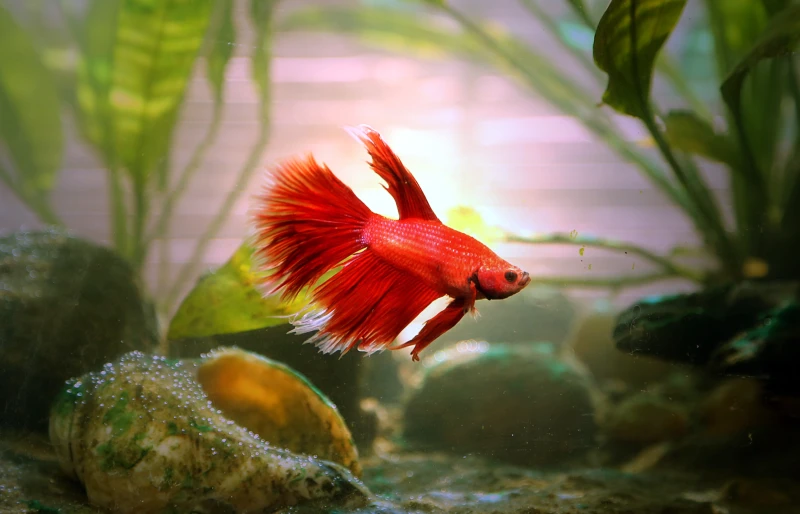How to Transport Betta Fish: Safest Tips & Tricks (Vet Answer)
By Dr. Luqman Javed, DVM (Vet)
Updated on

Click to Skip Ahead
Transporting fish is cumbersome but may also be necessary at times. Moving a betta might sound like a simple task, but there are some crucial steps you need to follow to ensure that you don’t cause your fish any harm and make the process as stress-free and streamlined as possible for yourself.
In this article, we’ll go through a step-by-step guide on betta fish transportation.
The 2 Situations That May Require Transporting Your Betta
It is odd to imagine transporting your betta. After all, fish shouldn’t be removed from their aquariums even during a water change. Indeed, for most fish, their aquarium will be a stationary, lifelong home.
However, there are scenarios where this may be a necessity. Therefore, it is important to know how to transport your betta.
- A vet visit. When an aquatic vet can’t come to your home to inspect your betta and perform a video consultation, you may have to transport your fish to the vet. Sometimes, your vet may advise you to bring in your fish after a video consultation (for a closer examination).
- A relocation. If you’re moving houses or changing your address, you might have to transport your fish as well.
1. Transport to a Veterinarian
At times, your veterinarian may prefer to see your betta in person and might request that you bring your betta in for a closer examination. In this instance, you’ll need the following:
- A very small transport aquarium or container with a lid
- Two spare water containers or empty water bottles with lids or covers
- A fish net
This process is relatively simple, assuming the trip to the vet’s office isn’t too long. If your betta will be out of your aquarium for 6 hours, the following steps can be used.
- Fill a spare water container or empty water bottle with water from your betta’s aquarium. Close the lid or cover. A small water bottle that holds about half a liter of water is usually enough for a short trip.
- Ensure the transport aquarium is clean. Fill it about halfway with water from your betta’s aquarium. It should also hold around half a liter of water when halfway full.
- Gently scoop your betta out in a net, and quickly transfer your pet into the transport aquarium and close the lid. Because ornaments and plants can sometimes topple during a trip, you should not place them in this transport aquarium.
- Ensure your car is warm enough for your betta during the trip. An ambient temperature of around 25–28 °C (77–82.4°F) is recommended. Ensure your betta is secure in your car (it’s best to have someone hold your fish). Drive slowly, and use routes without too many bumps or potholes.
If the trip lasts longer than 3 hours, replacing some of the water in your betta’s tank with the spare aquarium water you brought along is advisable. To do so, use the empty container to remove some of the water from the tank and replace an appropriate amount of water from your spare supply.
Though in most cases, you can safely reintroduce your betta to their aquarium after a short trip, you may wish to reacclimate them to the aquarium before doing so (especially if you suspect that the water temperatures have changed while you were away). If your transport aquarium can float in your betta’s aquarium (using a makeshift styrofoam ramp), you can acclimate your fish using the transport aquarium. If the tank cannot float, you would have to use a plastic bag to float your fish before adding them back into the tank.
2. A Relocation
A long trip for a relocation is much trickier and generally requires more preparation. To prepare for such a trip, you’ll need the following:
- A small transport aquarium with a secure lid or at least two plastic bags and a Tupperware container large enough to hold the bags (with a secure lid).
- Spare plastic bags (optional). These are used for other fish or aquarium plants
- A few water-holding containers. A 5- to 10-gallon bucket or another container is recommended (ensure they have lids).
- Your gravel vacuum or siphon
- A net
- Ammonia chips or ammonia-neutralizing medicine (optional)

The 10 Steps for a Driving Relocation
This process is relatively cumbersome and requires some planning. If you plan on flying with your fish, contact your airlines for their guidelines on how your fish should be transported. The steps for a driving relocation that takes less than 48 hours (2 days) are as follows:
1. Water Change
Feed your fish their usual food for the day, and then change at least 20–25% of the water in your aquarium 3 days before your trip. Please note that this advice assumes an appropriately stocked aquarium. Heavier-stocked aquariums will require more extensive changes.

2. Stop Feeding
Two days before your trip, stop feeding your fish. This minimizes the waste they produce during a long trip. Healthy, adult fish have no problems dealing with a fast of a few days. If your fish are young or unwell, try postponing your trip (if possible) or seek veterinary advice before fasting and transporting your fish.
3. Move Day
On the day of the move, fill the transport aquarium or plastic bag (depending on your choice) with some aquarium water, gently scoop up your betta, and place them in the transport unit.
Note: As labyrinth fish, bettas don’t require their plastic bags or transport aquariums to be full of oxygen for short trips; however, adding the oxygen into the bags will do them no harm.
If you are transporting your betta fish in a bag, ensure you seal it properly and double the bag for an added layer of security. Before sealing the bag, you may add some ammonia-absorbing chips or medicine into the water. This should be considered mandatory if your trip will take more than 24 hours.
If your aquarium has additional fish, ensure you place each one of them in an individual bag. Fish with sharp fins may easily tear open a plastic bag, and such fish should be placed in containers, not plastic bags.
Note: Your betta’s tank mates may need oxygen pumped into their transport bags & may have needs different from those of your betta.
4. Drain Tank
After your fish have been placed in their transport bags or tanks, drain the tank to the substrate (if any). Try salvaging some aquarium water in buckets or spare containers, depending on your space in your transport vehicle.
Please be mindful that aquariums should NOT be moved when they are full of water. Aquariums are designed to be stationary. They are exceptionally heavy when full of water. Uneven water pressure hitting the walls of a full aquarium being moved can cause glass aquariums to crack or shatter.

5. Pack Plants, Filter, and Substrate
If your tank has a substrate layer, you should place it in a bucket with a very thin layer of water (just enough to cover the substrate). Pack aquarium plants in plastic bags with some aquarium water and oxygen. Alternatively, plants can be placed in buckets with their roots submerged in aquarium water. Cover the bucket with a moist towel to ensure they don’t dry out during the trip. Your tank’s filter media should be kept wet throughout the move as well. The nitrifying bacteria used in your tank’s cycle will perish if they dry out.
6. Drive Slowly
Drive slowly and carefully, avoiding speed bumps whenever possible. If you plan to stop for the night, do not leave your fish in your car unattended. Instead, bring them in with you where you will stay for the night. Never leave fish (or any pets) in an unattended locked car during the day; they may die from heat stress. Try to keep your car warm, a temperature of around 25–28°C (77–82.4°F) is recommended. If this is not possible, try warming your betta’s container with a warm towel or a sweater.
7. When You Arrive
Setting up your aquarium quickly once you arrive at your destination is crucial. To do so, work in reverse by adding in the filter media, substrate, and plants first. Next, place any salvaged aquarium water you brought along. Fill up the aquarium with fresh de-chlorinated water as needed, and install any other appliances (such as your aquarium light & heater). Turn everything back on and ensure they are working properly.
Ensure you check the parameters of the new water source you’re going to use for your fish. If they are vastly different from the parameters of your previous water source, you should acclimate your fish to the aquarium very carefully and slowly.
8. Reacclimate Your Fish
After a long trip, it is important to reacclimate your fish to their aquarium for about 60–120 minutes. This is to avoid giving them a shock when they first arrive in potentially new waters.
9. Monitor Your Fish
It is best to not feed your fish for about a day after arriving (they may likely be too stressed to eat anyway). Keep a close eye on them, and monitor your water parameters periodically, especially during the first week after a relocation.

10. Seek Professional Advice
If you feel that your fish aren’t adjusting well after the move or seem to be taking a turn for the worse, you should promptly contact your veterinarian or a fisheries expert for advice.
Conclusion
Though somewhat cumbersome, transporting fish is sometimes a necessity. The steps we’ve discussed in this article should go a long way in ensuring that transporting your betta remains as stress-free as possible for them. Remember to always follow the lead of a professional whenever in doubt about how to transport your fish.
- Related Read: How to Transfer a Betta Fish from Cup to Tank
Featured Image Credit: Taddown Kamyodjai, Shutterstock













